It’s no secret that hail storms and damage are a regular occurrence here in Calgary. Seriously, it seems like we get hit every summer. But what may be a secret, is what the siding replacement process is like post-storm.
Sure, you may know to call a trusted company and go through insurance, but what about picking your replacement materials, figuring out the extent of the damage, and the timeframes for service?
Well, to help you through the process we’ve created this go to guide, full of everything Alberta homeowners need to know about storm siding damage and resulting repairs or replacement .At Guns N Hoses, we pride ourselves on year-round service while offering the style and protection you want from new siding. We’ve been Calgary’s preferred post-storm siding installer for almost 20 years, let’s explore why together!
How Storms Can Wreak Havoc on your Siding
Summer storms here on the prairies can be brutal, here is some of the most common storm siding damage we’ve come across over the years.
Hail Damage
Depending on which area of the city you live in, hail can be the size of golf balls. And unfortunately that means hailstones that can seriously damage your siding.
Cracks, dents and punctures are all common. And if you live in an area that is prone to storms, the risk of this type of damage increases significantly.
Wind Damage
In the past, Calgary has experienced wind gusts of up to 90km/h or more during peak storm periods. Winds that strong can easily rip off siding, exposing the structure underneath and increasing the risk for water damage to your home’s insulation and foundation, and mold and mildew growth.

Do You Need To Repair or Replace Your Siding?
Sometimes it can be tricky to figure out whether storm siding damage needs repair or replacement. But don’t worry, Guns N Hoses is here to help.
First, let’s take a look at issues that can be remedied with a quick repair, including:
- Isolated dents
- Small cracks
- Chips
Siding repair is a quick fix, but not a permanent fix. Siding patches, sanding and applying putty are all great ways to ensure water doesn’t get underneath your siding while you wait for professional service, but it might not be strong enough to withstand multiple storms.
Significant storm siding damage like warping, large holes or widespread water infiltration typically mean a full replacement is needed. Also, if your home is older and your siding is looking a little worse for wear, we will typically recommend a full replacement to match colours and material availability.

Steps To Take After A Storm
Storms are a stressful time, we understand! Here are some simple steps you can take to make the process just a little bit easier on your and your family.
Inspect Your Siding
Once the worst of the storm is over, head outside and take a visual inventory of the state of your siding. Take notes and photos of any damage, no matter how severe, as well of the location of that damage on your home.
Contact Your Insurance Company
We know that dealing with insurance isn’t always the easiest thing, but when armed with your notes and photos, it can be less of a hassle.
Every insurance company deals with claims differently, so make sure you’re familiar with their processes prior to reaching out so you’re better prepared.
Call Guns N Hoses For All Your Siding Needs
There are a number of roofing and exterior companies in the Calgary area, but here is why your friends and neighbours are consistently choosing us for all their post-storm siding needs.
We’ve got the training and experience necessary to give you the best, stress-free siding installation and repair service available. Plus we work with a number of local insurance companies, so you can get your job scheduling faster than you thought possible!
We run through the same tried and true formula on each siding appointment.
Evaluation
Each siding repair or replacement begins with our thorough evaluation where your siding contractor will assess the exterior of your home, examining the condition of your existing siding, the underlying structure and areas prone to moisture or damage.
Your contractor will also take into consideration environmental factors such as sun exposure and future hail risk before precise measurements are taken to ensure accurate material estimates.
Recommendation
Your contractor will present you with various siding options discussing the benefits, durability and maintenance requirements of each.
Recommendations will also be made regarding additional insulation or any repairs that need to be done.
All recommendations take into consideration your style, needs and budget.
Replacement
Your exterior walls are prepared by removing old siding and repairing any damaged areas before applying insulation and waterproofing layers as needed.
The chosen siding material is installed to manufacture guidelines and local building codes. This includes securing the siding panels, ensuring proper alignment and installing trim.
Once the service is complete, your contractor will conduct a final inspection to ensure quality workmanship.
We take pride in the best quality work with a team that you can rely on. And with our industry leading guarantees, we don’t give up until you’re fully satisfied with our services.
Leave No Trace
Our team is polite and always cleans up after themselves. After we complete your siding repair or replacement, you’ll never even know we were there! Well, except for the pretty siding we’ve left behind.
Zero Leaks, Guaranteed!
We ensure that your siding project is completed efficiently and correctly, the first time! And we guarantee that your new siding will be leak free next storm season. Because let’s be serious, there will be a next time when it comes to Alberta storms.
Material Options
We’ve been installing siding all over Calgary and the surrounding areas for nearly 20 years, so you can rest assured we know our stuff when it comes to reliable materials and the latest styles.
We can install pretty much any type of siding, but we install vinyl the most often and that’s because it’s the most economical.
We’re also proud suppliers of James Hardie siding and trim, and Versetta Stone siding, which are the best material options for standing up to Alberta’s finicky weather, and stand up against hail.
For almost two decades, the siding team at Guns N Hoses has been the top choice for post-storm related siding repair and replacement in Calgary and the surrounding areas. We’re committed to delivering high-quality, efficient service, with fully stocked trucks ready to handle any job.
We're proud to offer a friendly and reliable exterior experience you can count on. Give us a call today!
Frequently Asked Questions
Can I finance siding installation?
You can absolutely finance new siding installation. We’re proud to offer a number of financing options so you can get the material you need, faster than you thought possible.
How long does siding take to install?
The time it takes to complete your siding installation project will be determined by whether your entire house needs to be resided, or just a section. But no matter the timeframe, we’ll always give you an accurate time and cost estimate prior to any work starting, so you can be better prepared.
The right siding keeps your home energy efficient while protecting it from Calgary’s often harsh weather conditions—including rain, hail, and snow. But siding also plays a vital role in how your home looks, and can even help determine its value when you’re trying to sell it. That’s why choosing the right siding for your home is one of the most important decisions you’ll make as a homeowner.
Below, our team at Guns N Hoses compares several of the most popular siding materials on the market. We’ve spent years installing new siding in Calgary, so we’re happy to share our knowledge and help you choose the best option for your home.
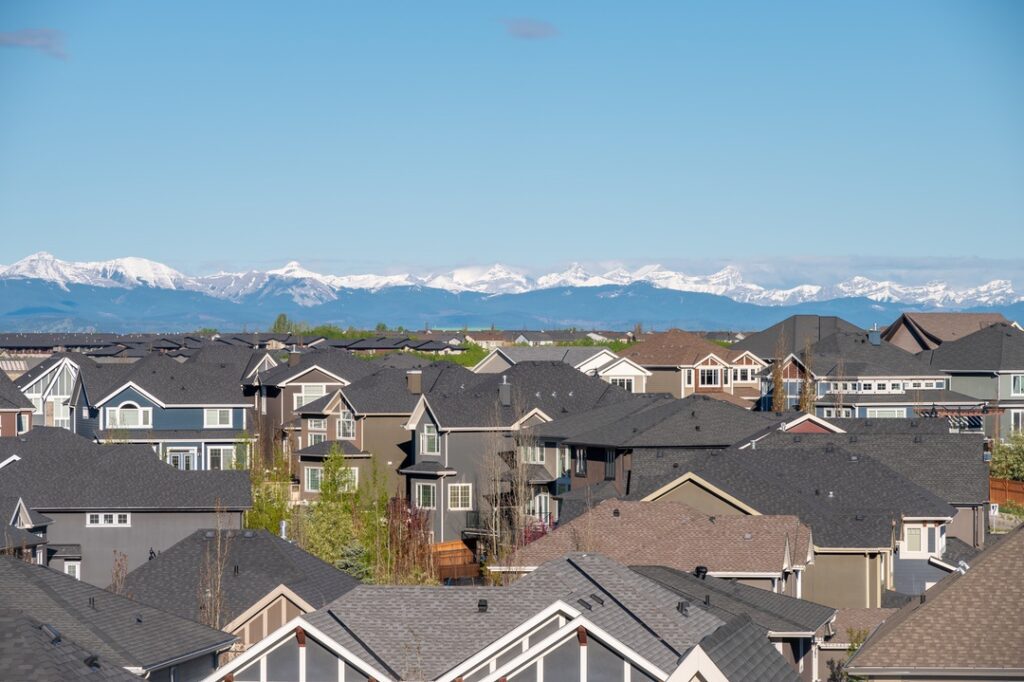
Why Siding Matters in Calgary’s Climate
Inclement Weather
As anyone who’s lived here knows, Calgary throws a lot at houses. Not only is there plenty of snow during the winter, but you’ll also deal with hail storms during the summer, sudden downpours in the spring or fall, and high-speed winds year-round. Make no mistake: any material you use for siding in Southern Alberta needs to be able to take a beating.
Temperature Changes
As if potentially extreme weather wasn’t enough, the temperature in Calgary can change rapidly, even in the course of a single day. These fluctuations can cause certain materials to expand and contract—so it’s best to choose siding that’s meant to handle heating and cooling without warping or cracking over time.
Wildfires & Other Climate Emergencies
With wildfires becoming an increasing threat to homes in Alberta and many other parts of the country, many homeowners are looking for siding that offers high heat resistance. This can protect your investment and provide an additional layer of safety in case of a climate emergency.
Calgary Siding Options Compared
Most homes in Calgary use one of several materials for siding—but these materials don’t all perform the same in Calgary’s unique climate. Here’s a breakdown of how they differ:
| Material | Pros | Cons | Performance in Calgary's Climate | Maintenance Required | Typical Costs | Average Lifespan |
| Vinyl Siding | Most common. Least expensive. | More easily damaged in inclement weather (hail, high winds, etc.). Melts quickly in wildfires. | May warp during extreme heat and cold fluctuations. Can easily crack and melt. | Wash annually. Check for cracks. | Starts at $3-8 per square foot | 20-30 years |
| Aluminum Siding | Resilient to most hazards. Doesn't crack in freeze/thaw cycles. Recyclable | Can dent or scratch due to hail or high winds. | Withstands extreme heat and doesn't easily ignite. Retains its form during temperature changes. | Check for dents, scratches, or corrosion. | +35% | 30-50 years |
| Engineered Wood Siding | Aesthetic appeal. Resistant to extreme heat & freeze/thaw cycles. | Less fire-resistant than some other materials. | Handles extreme temperatures without warping or deteriorating. Fire-resistant, but not as much as fibre cement or metal. | Check for rot, pests, and reseal or repaint as needed. | +45% | 20-30 years |
| Insulated Vinyl Siding | Enhanced R-value. Provides impact resistance. More energy efficient. | Still melts quickly in the high heat of a fire. | Provides insulation against extreme heat, but melts rapidly when exposed to fire. | Wash annually. Check for damages. | +60% | 25-30 years |
| Fibre Cement Board | Extremely resilient to many climate hazards. Doesn't shrink or warp in hot climates. | Water-resistant paint recommended to prevent damage. | Resilient to wildfire, hail, and high winds. Unaffected by hot climates. Needs proper maintenance to prevent water damage. | Paint with water-resilient paint. Repaint every 12-15 years. Check for moisture issues. | +65% | 30-50 years |
| Cementitious Stucco | Fire-resistant. Enhanced resistance when additional insulation is added. | Not ideal against heavy rain/winter storms. | Fire-resistant, but can shrink and crack due to moisture and snow. Additional insulation enhances performance. | Check for cracks, especially after rapid temperature changes. Repaint or reseal as needed. | +70% | 50-80 years (less if not properly maintained) |
| Steel | Extremely robust. Recyclable. Non-combustible. | Low insulative value without added insulation. | Withstands a wide range of climates. Non-combustible and does not ignite or spread fires. Requires insulation to improve energy efficiency in extreme heat. | Check for corrosion or dents. | +100% | 50+ years (if not dented by hail storms or blown debris) |
| Natural Wood | Classic aesthetic. | Prone to damage from various climate hazards. Requires treatments for enhanced resilience. | Warps over time, affecting insulation. Can be treated for fire resistance, but not entirely fire-proof. | Check for rot, pests, and reseal or repaint as needed. Use high-quality paint and metal flashing on corners. Seal joints well. | +160% | 20-40 years (less if not properly maintained) |
| Brick | Highly resilient against many hazards. Excellent protection against extreme heat. | Requires a good fastening system/mortar. | Highly resilient against fire, hail, and winds. Provides protection against extreme heat and reduces energy bills. Holds up well in rain. | Occasionally check mortar and clean bricks as needed. | +195% | 100+ years |
| Stone | Fire-resistant. Rarely damaged in high winds. | Susceptible to freeze/thaw cycle cracks. Low energy efficiency unless insulated. | Fire-resistant. Resistant to wind damage but can crack from freeze/thaw cycles. Requires insulation to improve energy efficiency. | Check for cracks or damages, especially after freeze/thaw cycles. | Typically more expensive than most other options. | 50+ years |
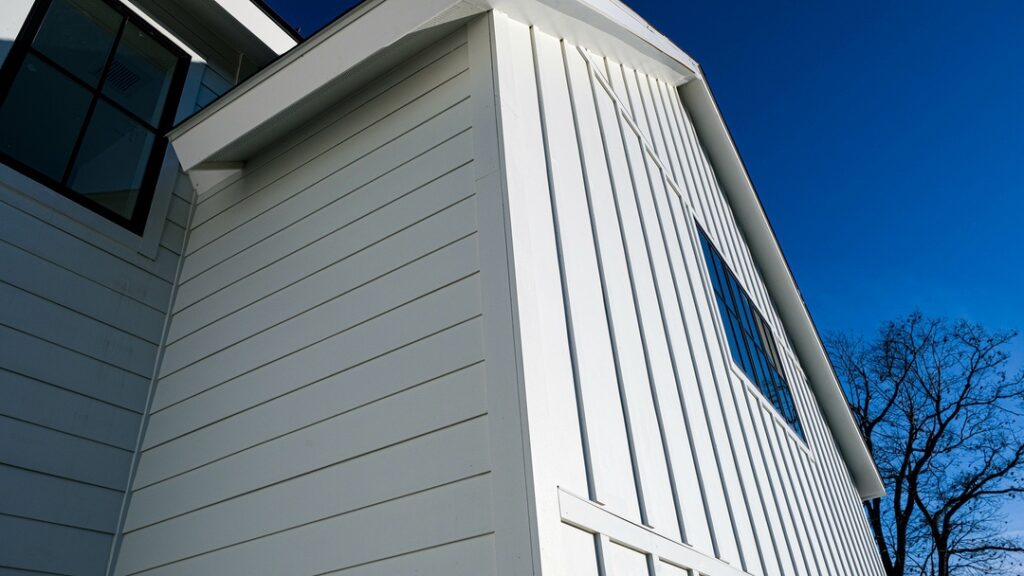
Our Recommendations for Calgary Homes
Guns N Hoses can use any of the materials above when installing new siding for your home—but in most cases, we recommend investing in James Hardie fiber cement siding if you want a low-maintenance siding solution that provides optimal weather resistance and improves the curb appeal of your home.
Alternatively, engineered wood siding can provide a classic and natural look for your home while maintaining its appearance over time, and stone makes an excellent option for homeowners who are willing to invest additional money in high-end, long-term protection.
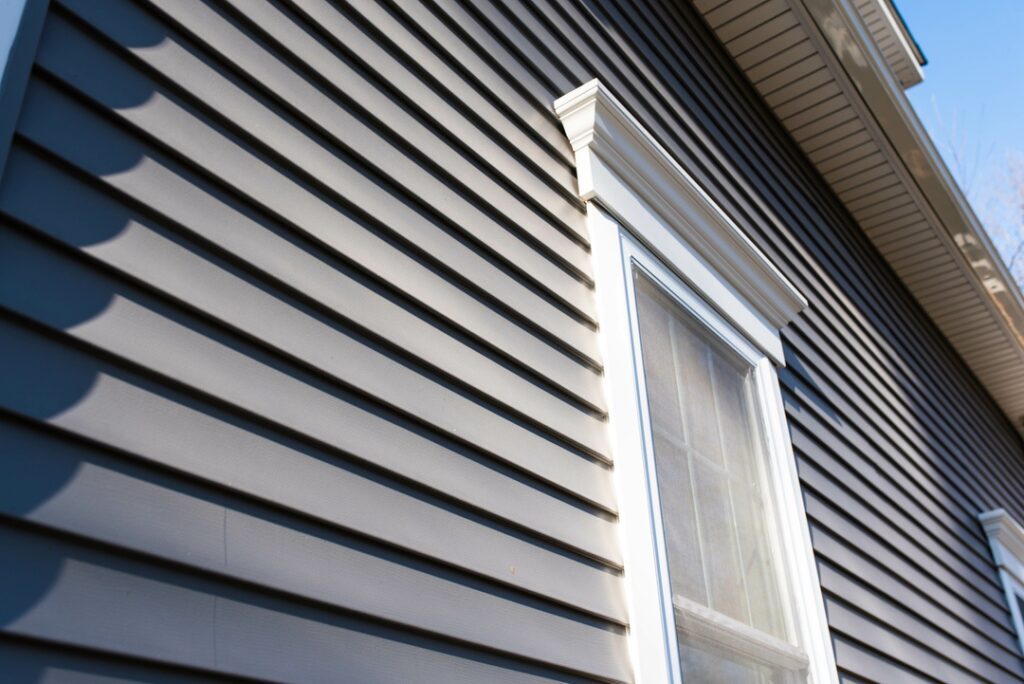
Budget-Conscious Options
Vinyl remains the most budget-friendly type of siding—but we strongly recommend choosing a version with added insulation for better energy efficiency and protection during extreme weather. Certain types of metal siding can also be affordable while providing decent weather protection, but you’ll have to look out for dents during hail storms and corrosion from rain or melting snow.
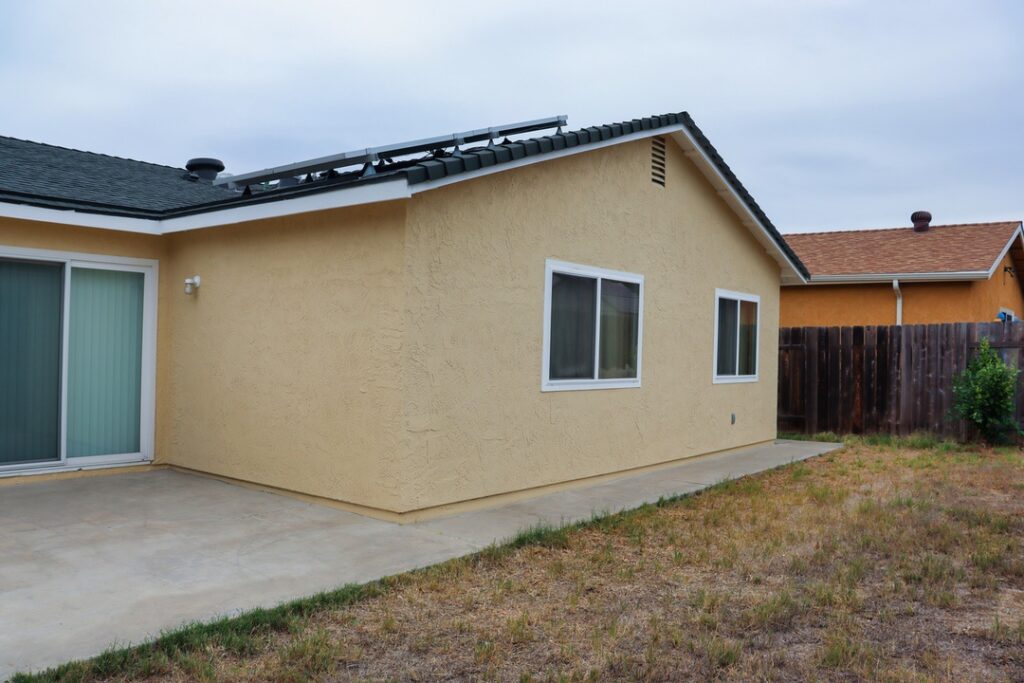
Niche Options for Special Cases
We typically do not recommend stucco or natural wood siding for Calgary homes. While these materials often look great, they’re fairly expensive and can easily become warped or cracked during seasonal temperature changes. Generally, we only suggest these options if you’re looking for a specific aesthetic and are willing to put in the extra effort to maintain your siding over time. Brick is also a viable option for homeowners who want a more traditional appearance—just make sure your home can take the weight!
Consider Your Needs As a Calgary Homeowner
Before deciding on one of the materials presented above, make sure to consider the following factors:
- Budget: What can you afford to spend on new siding? Remember to consider the expected lifespan of your siding as well—for example, vinyl siding is cheaper than fiber cement but may end up being more expensive in the long run if you have to replace it.
- Aesthetics: What materials suit the style of your home and surroundings best? What materials do other homes in your neighborhood use?
- Energy Efficiency: Will the materials you choose keep heat inside your home, or will you have to add extra insulation? Remember to factor this into the overall cost.
Professional Expertise for Your Siding Installation
Choosing siding for your home can feel complicated, but we’re here to provide you with expert advice. Our team can recommend siding options based on your budget, your stylistic preferences, and your home’s needs. We also provide free video estimates for each installation so that you can ballpark the costs and plan for the work ahead of time. Contact Guns N Hoses now to take the next step towards giving your home a brand new exterior this year, or browse the FAQ below to learn more.
Frequently Asked Questions about Siding in Calgary
How long does it take to install new siding?
The time it takes to install new siding depends on the size of your home, whether any repairs are needed, and whether your current siding needs to be removed. Typically, putting new siding on a home takes 1-2 weeks, but we’ll give you a specific estimate for your project when you contact our team.
Can Guns N Hoses install siding in the wintertime?
Absolutely! We install siding year-round. With our help, it’s easy to give your home the protection it needs whenever the need arises.
What siding will increase the value of my home?
Hardie Board fiber cement siding, engineered wood, and stone can all help improve the curb appeal of your home and help you sell it at a higher price. Conversely, cheaper siding materials like vinyl often have a minimal impact on home values.
What can I do to protect my new siding?
In addition to cleaning your siding and checking it for damage on a regular basis, you’ll want to keep water from running down the sides of your home during storms. To do this, consider installing leaf guards on your gutters that can prevent blockages in your roof’s drainage system and ensure that water is always carried away from your home effectively.
Putting new siding on your home is one of the best ways to improve its appearance and increase its curb appeal—which can raise its value as well. But before you start slapping brand spanking new siding all over the outside of your home, you’ll need to know something about architectural controls and how they’ll affect your plans.
The team at Guns N Hoses are experts at installing siding on Calgary homes, so we’re here to help! Check out our detailed explanation of architectural controls below so you can understand how they might affect your upcoming siding project.
What Are Architectural Controls?
Architectural controls are guidelines and regulations that govern the design and construction of buildings in certain areas. These controls are typically established by the municipality or community association in which a property is located.
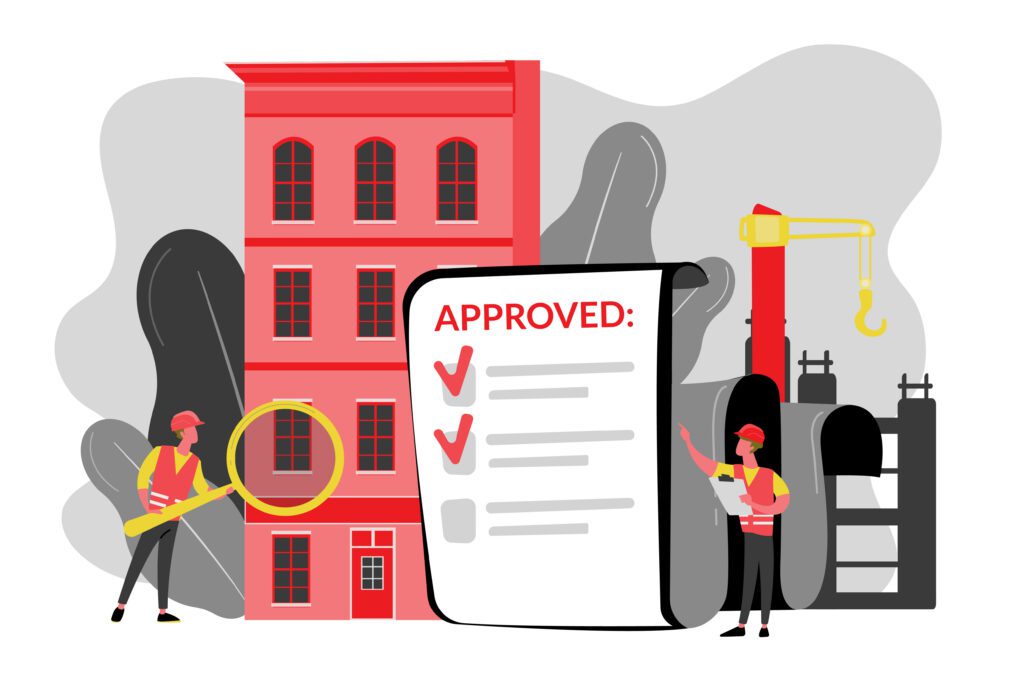
Why Do Architectural Controls Exist?
The purpose of architectural controls is to ensure that new development is compatible with the surrounding area and meets certain aesthetic and functional standards. In simple terms: these rules help prevent individual homeowners from making changes to their properties that could clash with the rest of the neighbourhood, offend its residents, or drive down property values.
Common Examples of Architectural Controls in Alberta
Examples of architectural controls in Alberta may include regulations on:
- Building height
- Lot coverage
- Setbacks
- Building materials
They may also include guidelines for:
- Landscaping
- Parking
- Building design and layout
Some architectural controls include requirements for certain architectural styles or building elements. It's important to note that architectural controls vary between municipalities or community associations, so it’s vital to check with your local authorities to understand the specific guidelines and regulations that apply to your property before you undertake any major renovations.

How to Find Your Architectural Controls in Alberta
Start by checking with your local municipality. The appropriate governing body, such as the city or town hall, will have information on the specific regulations and guidelines that apply to your area. For example, the City of Calgary’s website contains an archive of architectural controls for many different neighbourhoods. Click here to search for architectural controls in your area.
If you’re having trouble finding what you need, contact the city’s planning & development department. They will have the most updated regulations and guidelines and can provide specific information related to architectural controls in your neighborhood.
You can also check with your local community association. Community associations often have their own architectural controls in place, in addition to any regulations established by your municipality.
Common Architectural Controls for Home Siding in Calgary
Bigger cities like Calgary rarely have architectural controls for the entire municipality. This makes creating a list of siding regulations for all Calgary homes impossible—but there are a few common trends you can probably count on no matter where you live. These include:
- Material: Some municipalities or community associations may have regulations on the type of siding materials that are allowed. For example, they may require that all homes in the area have siding made of a certain type of material, such as wood, brick, or vinyl.
- Color: Some architectural controls may regulate the color of the siding that can be used on a home. This can help to ensure that new homes blend in with the surrounding structures and do not stand out in an unappealing way.
- Maintenance: Some architectural controls may require that siding be maintained in a specific way, such as being painted or sealed every certain number of years to maintain its appearance and longevity.
- Energy efficiency: Some municipalities may have regulations on the energy efficiency of the siding materials. For example, they may require the use of insulated siding or siding that meets a certain level of energy efficiency.
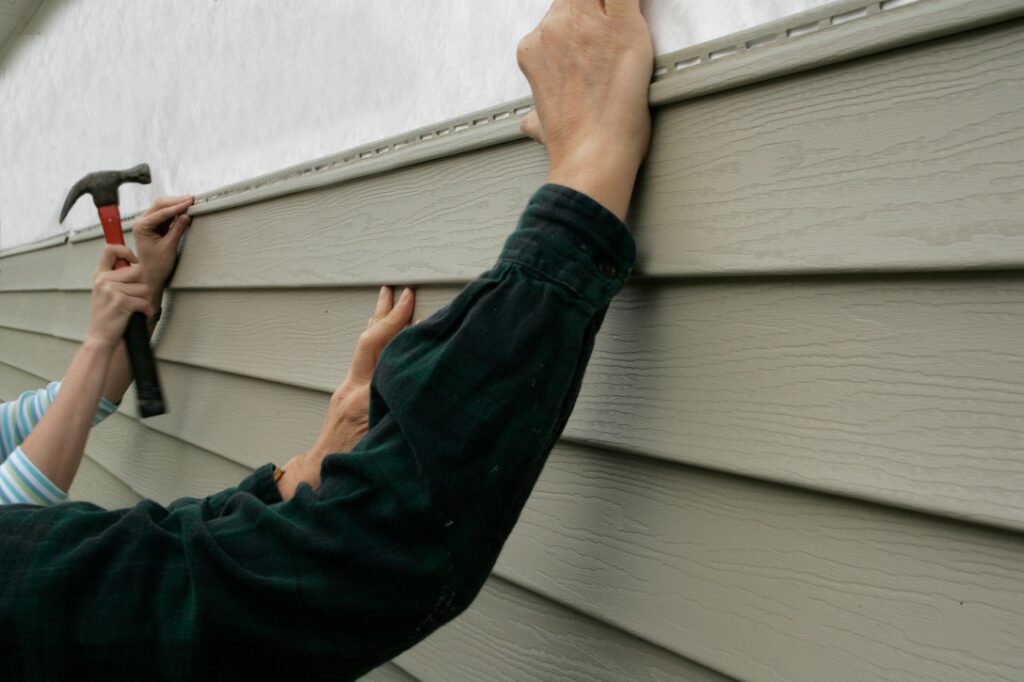
Potential Penalties for Not Following Architectural Controls
Some homeowners may resent being constrained by architectural controls when developing their own properties—but disregarding the architectural controls in your area has consequences. Penalties for not following architectural controls can include:
- Fines: The property owner may be fined for not following the architectural controls. The amount of the fine can vary depending on the severity of the violation.
- Cease and desist orders: The municipality may issue an order to stop work on the property until the violations are corrected. This can cause major inconveniences for homeowners and drive up project costs by stretching out timelines.
- Demolition orders: If a building is constructed in violation of architectural controls and cannot be easily corrected, the municipality may order the building to be demolished. This usually applies more to commercial buildings than residential ones—but it’s still a risk you’ll want to avoid.
- Liability for damages: Some architectural controls exist for safety reasons instead of aesthetic ones. Property owners may be held liable for any damages that result from the violation of architectural controls.
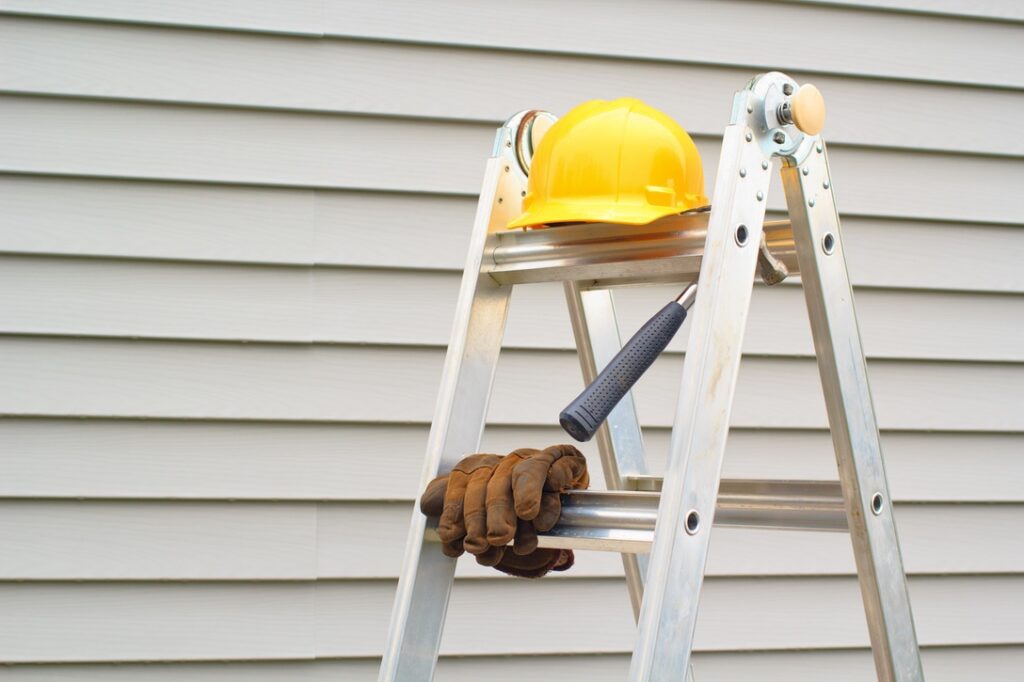
How to Ensure Your Siding Complies with Your Area’s Architectural Controls
Architectural controls might not always feel convenient, but they are important. They help keep your home tasteful and safe while making property values in your area more stable and consistent.
And while architectural controls can feel like obstacles when you’re trying to make changes to your home, it’s worth noting that you don’t have to navigate them alone! In fact, when you get new siding installed by Guns N Hoses, we’ll present you with options that are appropriate and legal for the community where you live. Contact us now to talk about the project you’re planning!
The materials used for your home’s exterior can have a huge impact on its condition and value over time. Carefully choosing high-quality siding and properly maintaining it lets you save on heating and cooling while preventing leaks or moisture from accumulating in your home. Although there are many siding materials to choose from, the most popular choice in Calgary is vinyl—but why?
Guns N Hoses installs siding on homes across Calgary, so our team has experience with a wide range of materials—from vinyl to Versetta Stone, Hardie board, KWP engineered wood products, and more. Below, we’ll help you learn everything you need to know about vinyl siding so you can decide whether it’s right for your home.
Vinyl Siding and Calgary’s Climate
Siding in Calgary needs to be strong enough to withstand the city’s often-drastic seasonal temperature changes—but most homeowners also want siding to be affordable, good looking, and low maintenance. While there are materials available that may outperform vinyl in on or two of those categories, vinyl remains the most popular siding choice because of the balance it strikes between all of these properties.
Yes, some people might prefer the look of stone or wood—but those materials often require more maintenance over time. And while Hardie board might be tougher, it’s also heavier, more expensive, and more time-consuming to install. That doesn’t make any of those materials bad options—but because vinyl is a “jack of all trades” siding material that looks good and lasts for years without requiring much work, it’s easy to see why people all over Calgary still choose to use it.
Other Types of Siding
Let’s take a closer look at some alternatives to vinyl siding and why they’re used.
Hardie Board
Hardie board is a popular choice for siding due to its exceptional durability and low maintenance. However, home owners interested in Hardie board should be prepared to make a larger investment up front, due to its higher costs and the extra time required to install it because of its weight.
Real Stone Siding
Like Hardie board, real stone siding can be costly to install—but it’s often chosen for its sustainability, since it’s one of the only siding materials that can be recycled. Stone siding is also appealing for its ability to increase the resale value of a home, since many people like the look.
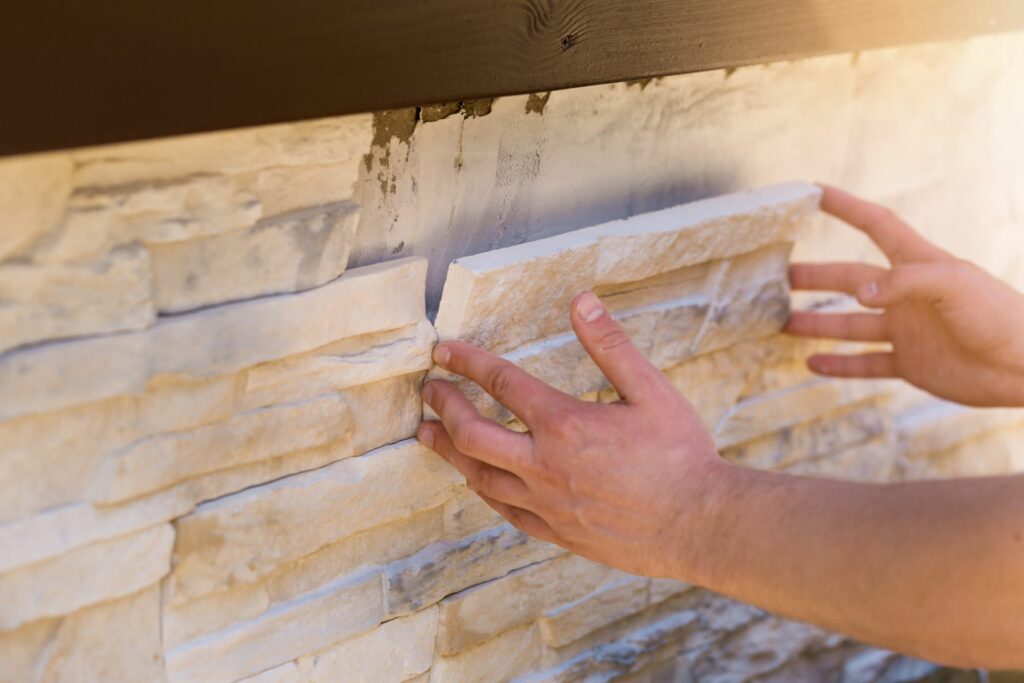
Stone Veneer
Some homeowners are choosing stone veneer for a more affordable option that looks similar to the real deal. This type of siding is a lightweight alternative to real stone while maintaining the same aesthetic purposes. However, there can be risks to using this type of siding. These panels can introduce moisture if not installed properly, leading to costly repairs (that’s why it’s vital to make sure you hire professionals like us to install any kind of siding you choose).
Other Siding Options
There’s a range of other siding materials available, including metal, brick, and wood—but many of these are impractical for Calgary’s climate (although wood can be an excellent choice if you buy a high-quality product and take care of it properly). If you have questions about using one of these materials for the exterior of your home, contact us and speak with a professional who can tell you more about each option.
Strengths of Vinyl Siding
- Vinyl siding offers several compelling advantages over other siding materials:
- Vinyl siding is inexpensive compared to most other materials (like fiber cement, stone, or high-quality wood).
- Vinyl is extremely customizable as it comes ready to install in a variety of colours, finishes, styles, and textures.
- Vinyl is low maintenance—it does not need to be painted as the colour does not flake or chip off.
- Vinyl siding can withstand most harsh climates, since it doesn’t warp as much as wood or metal siding during seasonal temperature shifts.
- Because it’s lightweight, vinyl siding has an easy installation process.
- Vinyl siding effectively protects the wood underneath your siding from moisture when installed by our careful professionals.
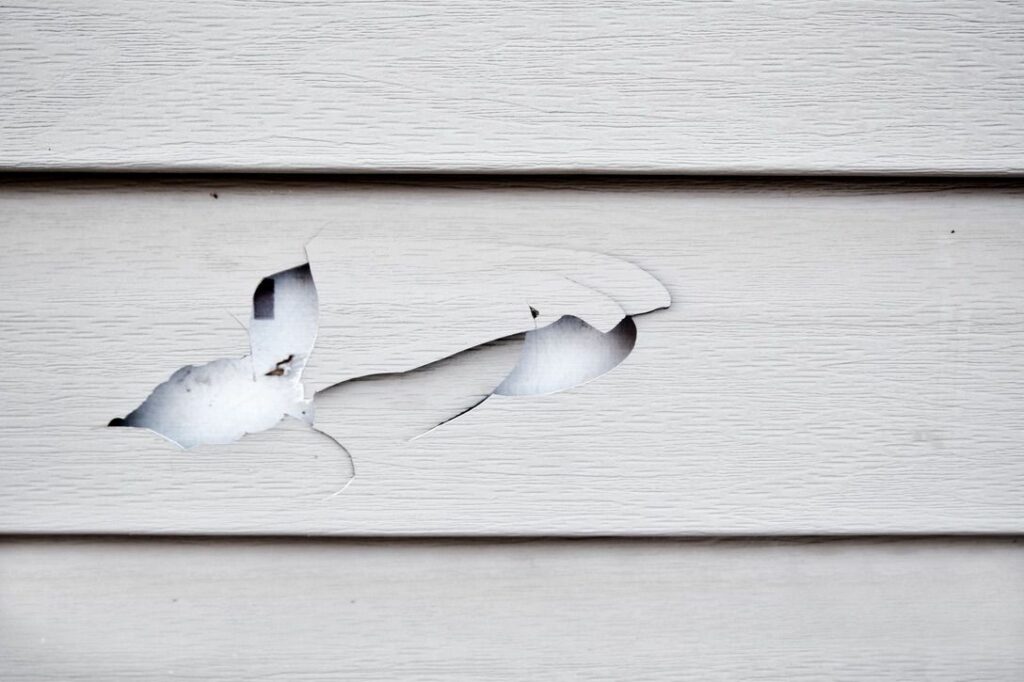
Weaknesses of Vinyl Siding
Like all siding materials, vinyl siding has a few vulnerabilities—and being aware of them can give you the knowledge you need to keep your vinyl siding in great shape longer!
- The effectiveness of vinyl siding depends on installation—yes, you can do it yourself, but you may run into future maintenance issues if installed improperly. We recommend hiring a professional to install vinyl siding.
- Vinyl is not as eco-friendly as other siding materials—if vinyl cannot be recycled, it is often burned in landfills contributing to pollution.
- Although it normally lasts for decades, vinyl can warp over time in climates with a wide annual range of temperatures. Calgary’s bitterly cold winters and short but hot summers can eventually result in warping and cracking in vinyl panels.

Get a Complimentary Quote For Your Home’s Siding
Although Calgary experiences extremes when it comes to weather, vinyl siding is still the most popular choice due to its affordability, low maintenance, and customization. But regardless of whether you’re planning to replace your siding with vinyl, Hardie board, stone veneer, or another material, the team at Guns N Hoses can help you find high-quality products that meet your home’s unique needs. Contact us to learn more about replacing or repairing your home’s siding.
We all want to improve the energy efficiency of our homes. Energy-conscious living is better for the environment and helps battle the ever-rising costs of gas and electricity.
ENERGY STAR appliances and electronics lower consumption inside your home. But your home’s exterior plays a massive part in improving energy efficiency, too.
When you think about it, your roof, exterior walls, doors, and windows are the gateways for energy to flow in and out of your home. The materials used and the condition of these structures can affect the performance and the overall energy efficiency of your personal ecosystem.
Here are 7 ways your home’s exterior can improve energy efficiency and lower utility bills.
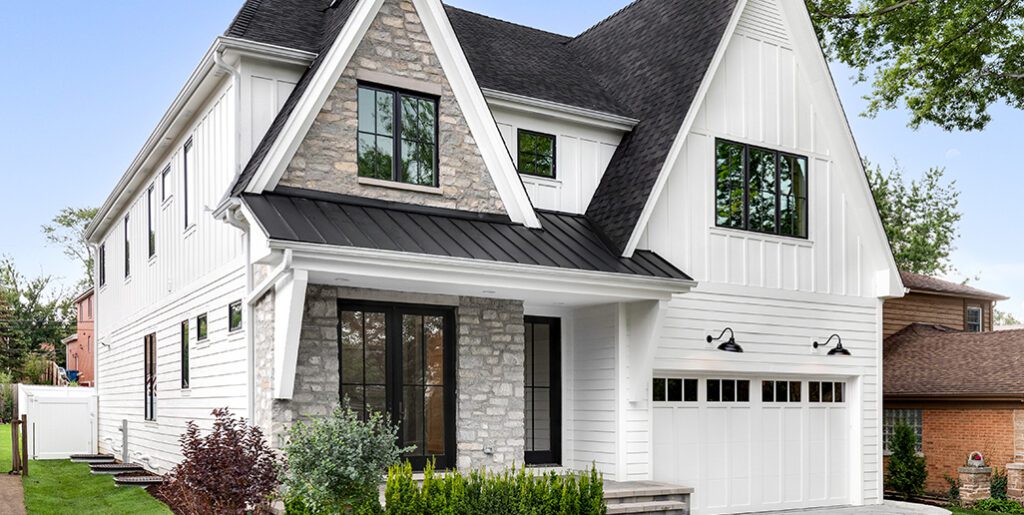
1. Roofing Materials Matter
Roof Colour Can Change More Than the Look
If you wear a black shirt on a hot day, you’ll feel warmer than someone wearing a white top. The same principle applies to roofing materials exposed to the sun. Dark roofing materials will absorb and hold more heat than light-coloured roofing materials.
So the question is, are you (and your home) usually trying to stay cool or warm? Cold climates that often require heating are better served by dark roofs that absorb more heat through the winter. This raises the temperature inside your structure and lessens the workload for your heating system.
Alternatively, homes in warmer climates are better served by light-coloured roofs. Light exteriors will better reflect heat through the hot months and improve the efficiency of your air conditioner. This is why many buildings in the Mediterranean and other hot climates are painted entirely white.
Roofing material type will also affect how much heat is reflected or maintained. Still, the colour of your roof can make a difference in regulating your home’s temperature.
Weather-Resistant Roofing Works Better
Wind can be a problem for poorly installed roofs or roof materials that aren’t rated for your climate. High-velocity winds have the power to lift and even remove shingles and other roofing materials. A damaged roof does a poor job of keeping climate-controlled air inside and the elements out of your house.
Hail damage is another common way that shingles are damaged. Roof damage can affect the performance of insulation, air conditioners, and furnaces. So make sure you consult a professional and choose the right type of roof next time you’re up for a replacement.
A rubber roofing product like Euroshield is ideal for regions that experience hailstorms and other extreme conditions. By reducing the replacement materials needed for damaged roofing, you also decrease the energy consumption used in manufacturing.
Harvest Your Own Energy with Solar Roofing
If you want to really improve your home’s energy efficiency and energy independence, install a solar roof. Outfitting your home with solar panels is expensive and requires the work of a specialized roofing contractor and an electrician.
Using harvested solar energy to power your home’s heating and electrical systems will definitely lower your utility bills. But because of the high costs of entry, solar roofing isn’t for everyone. Ask your local roofing company what products are available in your region and the ballpark costs for installation.
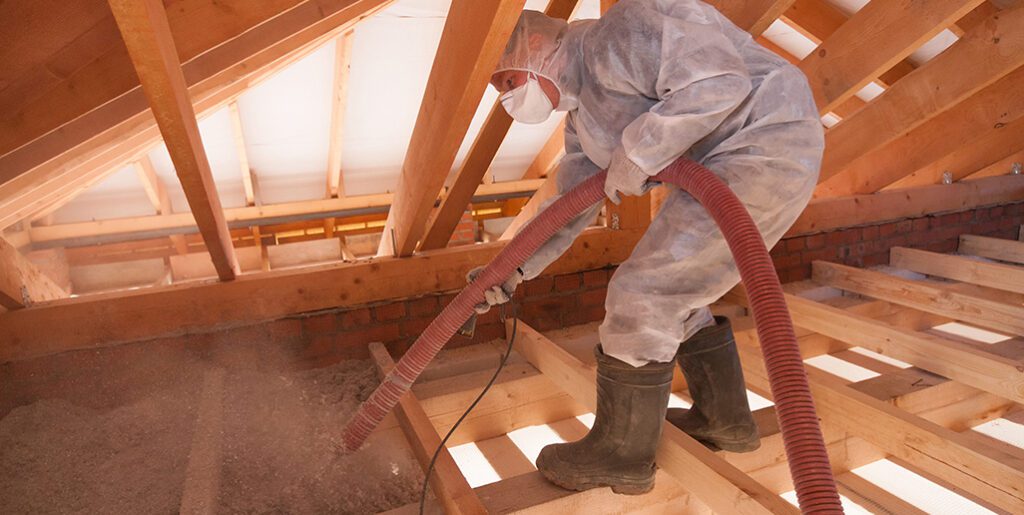
2. Excellent Insulation Helps Your Home Stay Efficient
Home insulation is any material placed in and around your home’s exterior surfaces to help regulate heat. Insulation should keep warm air inside during the winter and hot air outside during the summer.
Properly insulating all of the key areas in your home can improve energy efficiency for your heating and cooling systems. Ensure attics, exterior walls, and basement foundations are insulated with an R-value (ability to resist heat flow) suitable for your climate.
Infrared thermal imaging is one way to get a clear idea of where energy loss occurs in your attic and other areas. This technology lets you pinpoint trouble spots in your insulation and air seal or reinsulate these spaces for better energy efficiency.
Here are some more ways to make your attic energy efficient.
Control Your Climate with High-Efficiency HVAC
Once your home is adequately insulated and ready to keep the heat in, choose HVAC equipment that’s also energy efficient. Investing in a high-efficiency furnace can lower your monthly heating costs by up to 40%!
Look for certified ENERGY STAR air conditioners, furnaces, and other appliances to improve your home's energy efficiency.
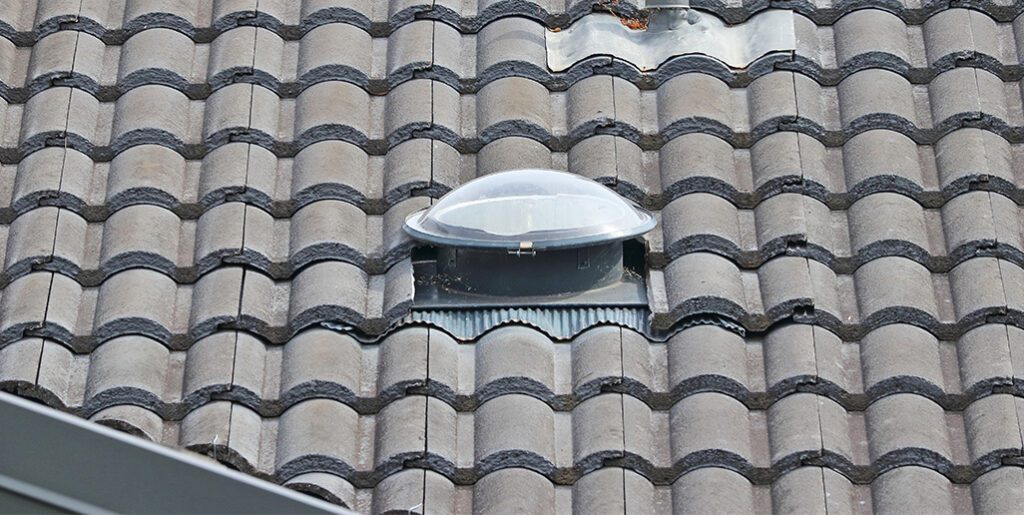
3. Solar Roof Vents Will Help Lower Bills
A critical aspect of healthy indoor air quality is ventilation. Warm air condenses once it rises to your attic, adding unwanted moisture to your insulation and roofing materials. This high humidity can damage structural materials and lead to mould and bacterial growth.
The answer: solar attic vents! These solar-powered vents use the sun’s energy to open and close, controlling temperature and humidity. Exchanging and regulating air quality with roof vents lowers the demand on your HVAC system, particularly in the summer when stagnant hot air can fill your attic.
These roof additions power themselves, improve your home’s energy efficiency, and contribute to a longer lifespan for your roofing and insulation materials.
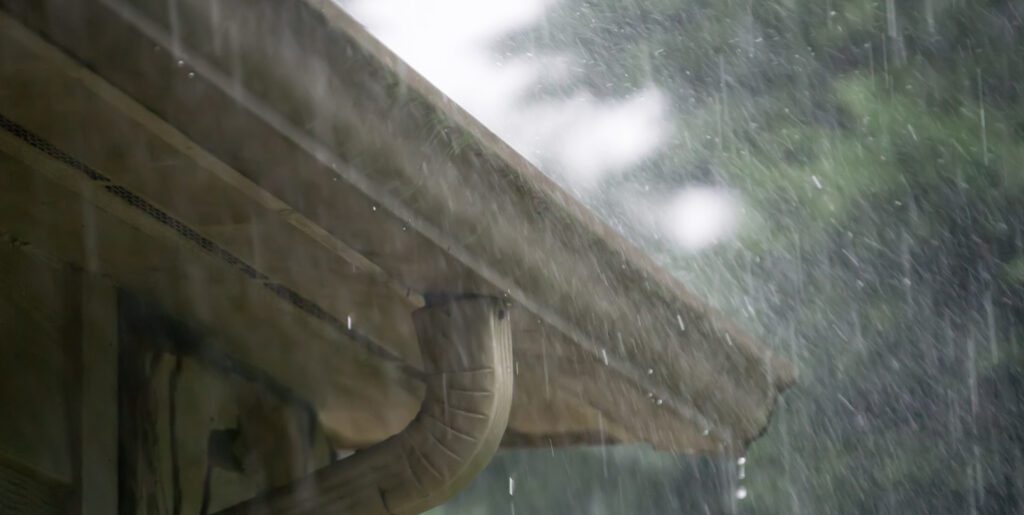
4. Make Sure Your Gutters Are Flowing Freely
The gutters and eavestroughs hanging off your roof are there to channel water runoff to safe locations. But when these drains get clogged or blocked, it can lead to major damage and run up your utility bills.
The water that drains from your roof can be used to irrigate lawns and gardens with natural, free rainwater. Using tap water and automated sprinklers to help your grass grow costs money and extra energy.
LeafGuard is a great way to keep muck and debris out of your gutters. This product protects eavestroughs from debris and helps keep water flowing where it should be. And remember that it’s common to replace gutters and downspouts several times throughout the life of a home.
Here are some tips for fixing a leaky gutter that isn’t delivering water where you need it.
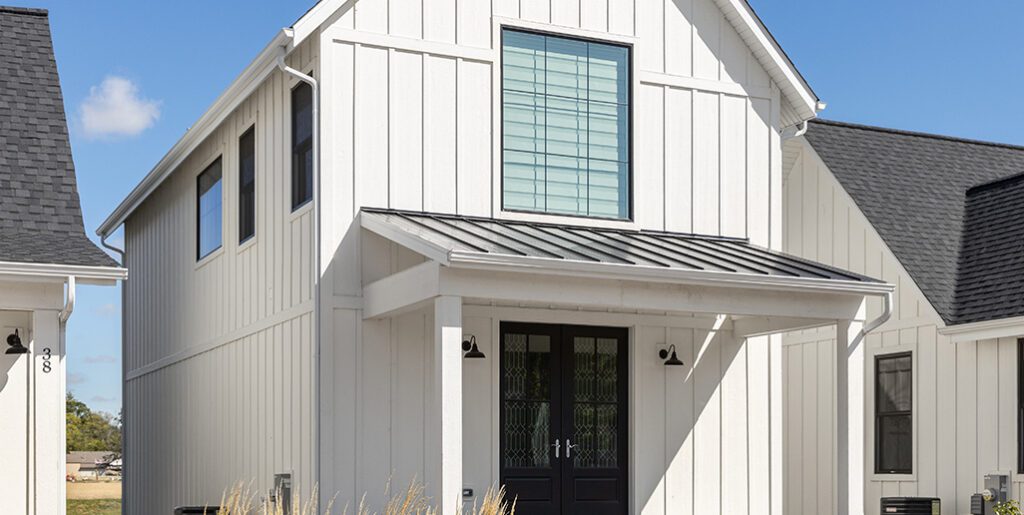
5. Keep Heat Inside with Quality Siding
The quality and condition of your siding are other factors that can help or hinder your home’s energy efficiency. No part of your home’s exterior is safe from weather damage, and siding is no exception.
Heat energy can escape through holes, cracks, and gaps in siding due to weather or aging. This is why, just like your roof, your siding should be inspected by a professional after a major hailstorm.
Siding can also improve your home’s energy efficiency just as roofing materials can—by its colour. Dark colours will absorb heat and make your home warmer; light colours reflect heat and help keep indoor temperatures down. Siding materials have their own insulation value, so work with an exterior specialist to pick a siding colour and material that helps keep your energy costs down.
Your impact on global energy efficiency can be improved when you select a recyclable siding product like Hardie boards and panels. This material is highly rated against hail and poor weather and uses recycled materials in its manufacturing.
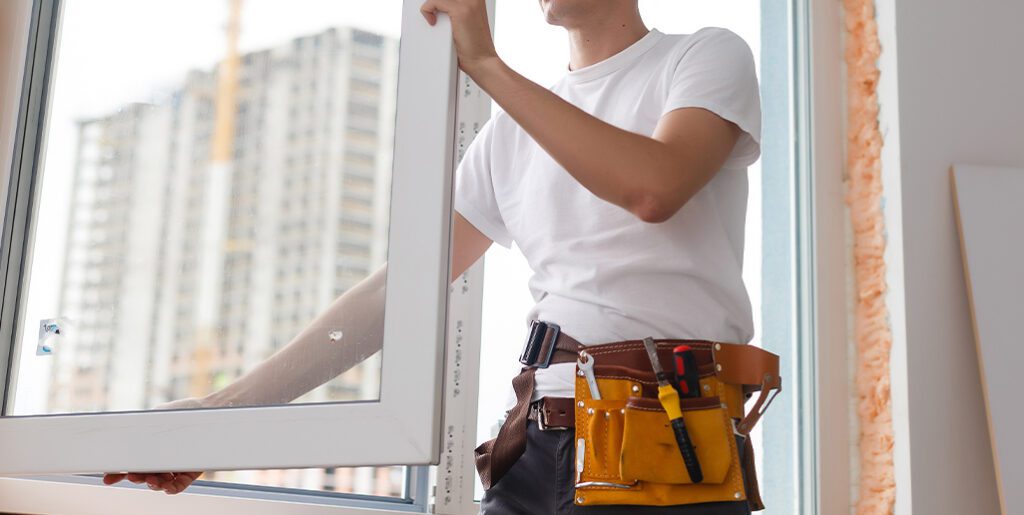
6. Conserve Consumption with Energy-Efficient Windows & Doors
If there’s a draft in your house, there’s a good chance it's coming from a window or doorway. Poorly sealed or insulated doors and windows are one of the ways your home’s energy efficiency can take a hit.
Older, single-pane windows just don’t perform very well in cold climates. Doors and windows can account for 25% of your home’s total heat loss. So upgrading these areas should be a priority if you’re looking to improve your home’s energy efficiency.
Refitting your home with energy-efficient doors and windows is the most effective way to limit heat loss in these areas. But weatherstripping windows and doors or using heat-shrink film over glass panes are a couple of less expensive solutions to prevent serious heat loss. Here are some DIY tips for keeping the heat in.
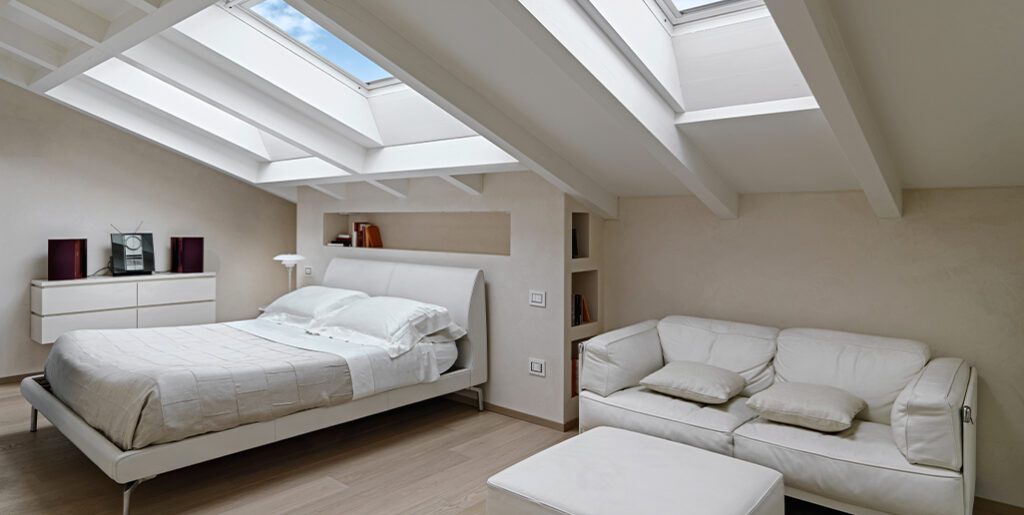
7. Install a Skylight for Added Natural Light & Heat
A skylight is a beautiful addition to any home, but it’s not just the aesthetic that will benefit your lifestyle. Skylights allow the sun to do work that your utility company would otherwise charge for.
Sun tunnels and skylights let precious natural sunlight into your home. And this sunlight provides warmth throughout the day, which means you can turn the thermostat down. If it’s summertime and you want to keep the heat out, reflective skylight windows and coatings are available.
Natural light is also an excellent excuse to flick the lights off during the day. Here’s some great info about maximizing sun exposure with a skylight, which is a great way to lower your home’s energy consumption.
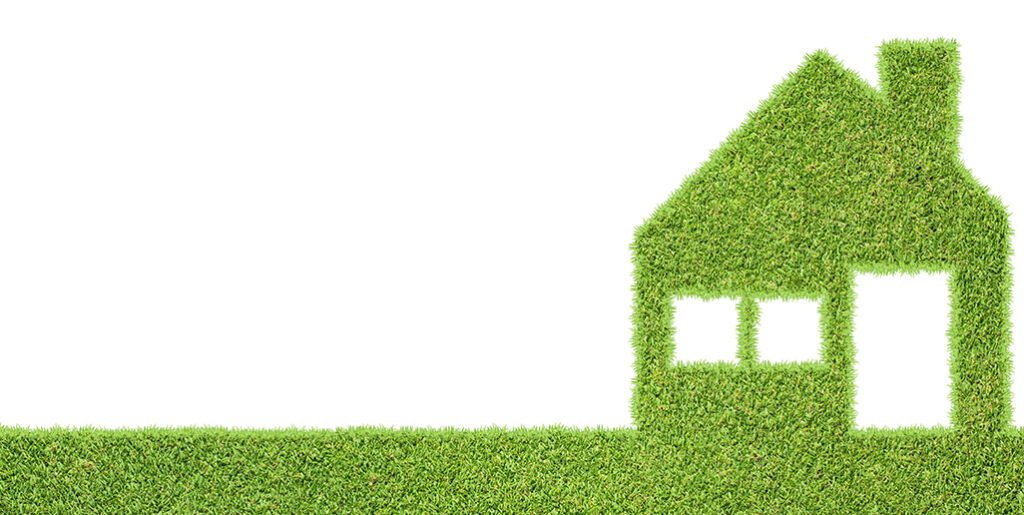
Grants for Greener Homes in Alberta
You’re not the only one hoping to improve your home’s energy efficiency—the government wants to see it too! So much so, that provincial and federal governments have created rebates, grants, and bursaries for energy-conscious homeowners.
The Canada Greener Homes Initiative is designed for homeowners ready to retrofit their living space with energy-efficient upgrades. The program offers grants and interest-free loans to help with these renovations.
The Clean Energy Improvement Program (CEIP) is a provincial mandate in Alberta that helps homeowners complete energy-efficient upgrades without putting money down. The City of Calgary has more information on how this affects property owners.
We’re Committed to Increasing Efficiency
Guns N Hoses Roofing is committed to improving energy efficiency in communities across Calgary. We are proud of our partnerships with energy-conscious suppliers and encourage homeowners to consider eco-friendly exterior products such as Euroshield and Hardie Board.
Our experts will always inform you of the available grants and rebates once you’re ready to complete exterior upgrades and additions.
We take on every job with the goal of improving your home’s energy efficiency when we repair or replace roofs and exteriors. Give us a call if you’re ready to update your home’s exterior and lower your energy consumption.
Siding is an important part of your home that protects you from snow, wind, hail, and the rest of nature’s elements. Also known as cladding, this outer layer of the structure acts as the first line of defence in protecting your home’s framing, electrical, and other systems that allow you to live comfortably.
Residential siding is available in several types of materials. The right choice for your home depends on regional demands (aka the weather), budget, and your desired aesthetic. But hail storms are common in Alberta, so choosing a siding that can withstand this weather is crucial!
Let’s discuss what materials are available for residential siding and what to expect from each type of home cladding.
The Role of Residential Siding
Your home’s roof and siding act in tandem to protect the insides from weather, animals, the sun, and other environmental challenges. But siding can also contribute to your home’s aesthetic and can be installed with design in mind.
Siding is usually hung on horizontal furring strips or vertical studs that are nailed to the exterior walls of your home. The siding panels are then nailed to the furring or studs.
Beyond being a layer of protection for your home, residential siding:
- Gives your home character and appeal
- Increases the value of your property
- Protects your home from the elements, like wind and rain
- Makes your home more energy efficient by reflecting heat in the summer and trapping heat in the winter
The Different Types of Residential Siding Materials
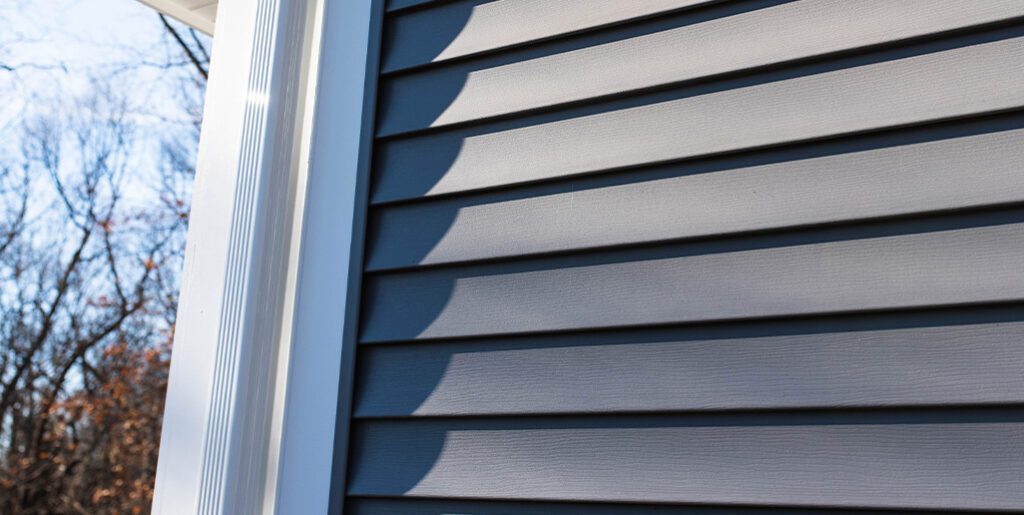
Vinyl Siding
Vinyl siding is one of the most popular types of residential siding. It’s durable, low-maintenance, and provides excellent insulation against the elements. However, vinyl siding can crack or fade over time if it isn’t properly cared for and doesn’t provide as much soundproofing as other materials.
One of the main benefits of vinyl siding is that it’s available in various colours and styles, so you can find the perfect look for your home. Vinyl siding is also affordable compared to other materials.
However, vinyl siding may not be the best choice for homes in areas that are prone to hail storms, as it can crack or dent easily. If you live in an area with severe weather, you may want to consider a different exterior material.
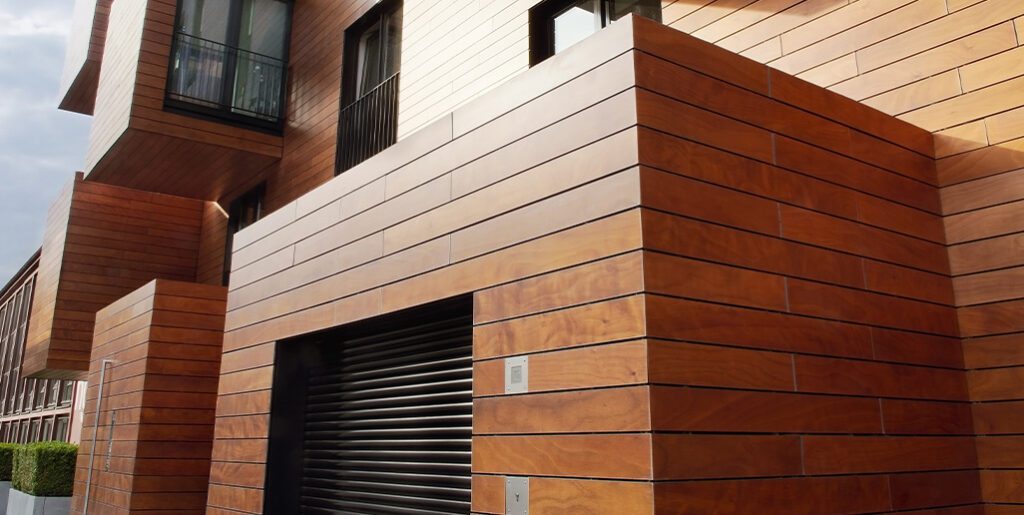
Wood Siding
Wood siding is a classic choice that adds natural beauty and charm to your home. It's is also a very durable material, so it can withstand the elements well. However, wood siding requires more maintenance than some other materials, and it’s also one of the more expensive options.
If you choose wood siding for your home, select a type of wood naturally resistant to rot and pests, like cedar or redwood. You should also plan to repaint or restain your wood siding every few years to protect it from the elements.
Wood siding can be challenging to maintain in the dry Albert climate. Despite the charming aesthetic, homeowners may find wood cladding warps and cracks after only a few years of use.
Engineered Wood Siding
Engineered wood siding is made by compressing recycled wood with resin to create a very strong, weather-resistant material. Due to its manufacturing process, engineered wood doesn’t warp or crack like raw wood products, but still has the natural aesthetic.
Products from KWP are a durable, eco-conscious siding choice that can be installed in virtually any colour.
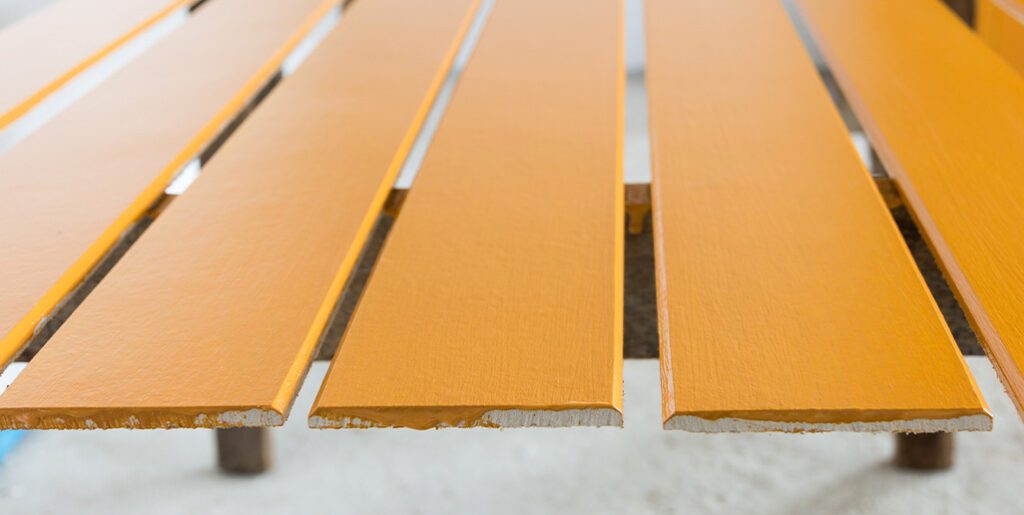
Fiber Cement Siding
This newer type of residential siding combines the best features of wood and vinyl siding. It’s made from a mixture of wood fibers and Portland cement, which makes it extremely durable and low maintenance.
Hardie fiber cement siding and backerboard has emerged as a material suitable for harsh weather conditions. This versatile cladding is available in a spectrum of colours and styles, and has become a favourite for many homeowners in hail-prone regions.
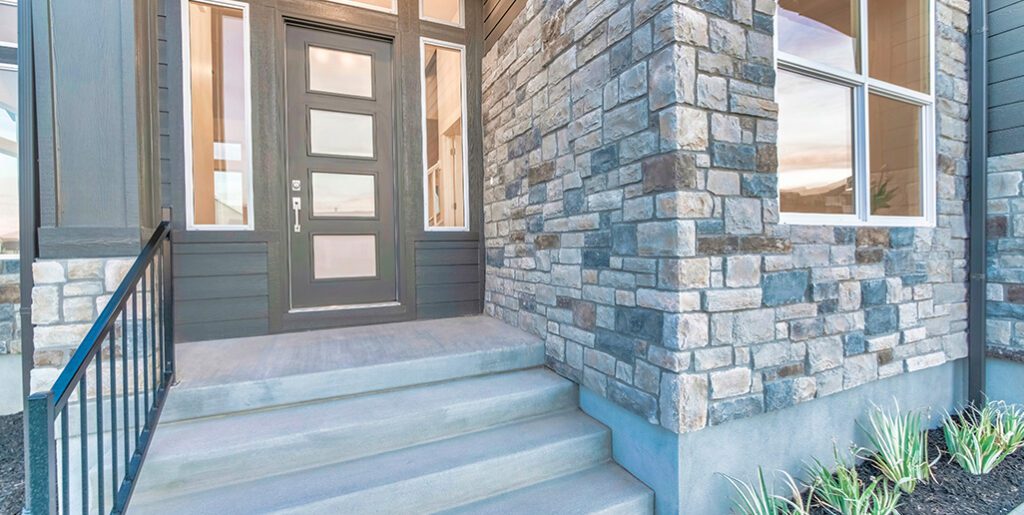
Brick & Stone Veneer Siding
Brick and stone are popular choices for homeowners with some room in the budget. Being made from fired clay that’s kiln-dried creates a durable product. It’s a good choice for residential siding because it’s fire resistant and has excellent insulating properties.
Stone is a natural product that is quarried and cut into thin sheets. It’s a popular choice for residential siding because it adds an elegant look to any home.
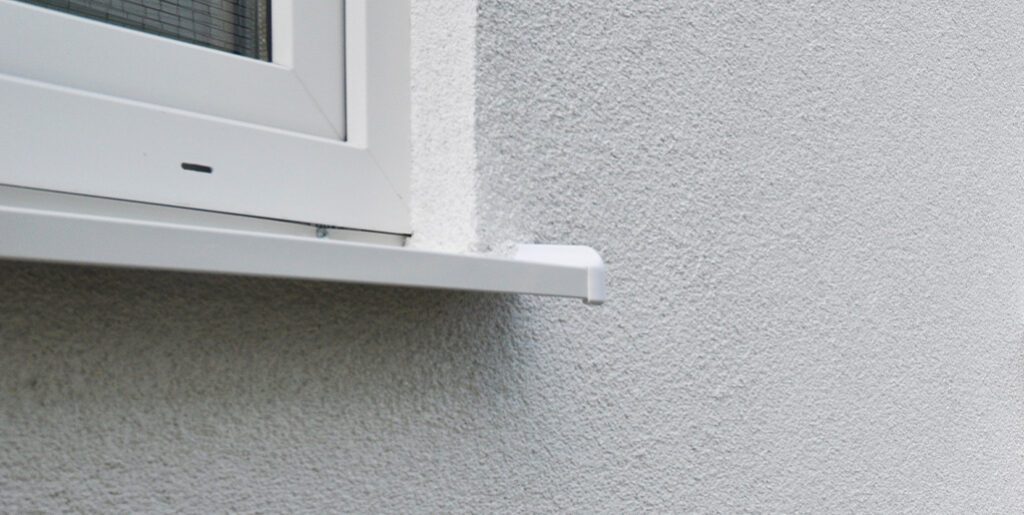
Stucco Siding
Stucco siding is made from a mix of Portland cement, sand, water, and lime. It's applied to homes as a thick plaster, and can be smooth or textured. Stucco is a common residential siding choice because it's incredibly durable and low maintenance. It's also fire resistant and energy efficient.
One downside of stucco siding is that it can be expensive. However, the initial investment is worth it because stucco will last for decades with proper care.
Residential Siding Material Comparison
| Siding Type | Cost | Durability | Hail Resistant? |
| Vinyl | $ | ★ | |
| Wood | $$ | ★★ | ★★ |
| Cement/Hardie Board | $$ | ★★★ | ★★★ |
| Brick & Stone | $$$ | ★★★ | ★★★ |
| Aluminum | $ | ★ | ★ |
| Stucco | $$ | ★★ | ★★ |
Side with a Siding Expert
Replacing your home’s siding is a big job. That’s why most people consult a professional when it’s time to upgrade or replace residential siding. There are many types and materials to choose from, but an exterior specialist can make the decision more manageable.
Guns N Hoses Roofing installs and repairs residential siding for homeowners across Southern Alberta. We’re well-versed in dealing with hail damage and know what type of siding performs best with the weather here. We’ll help you find weather-resistant siding that fits your budget and your home’s aesthetic.
Leaf guards play a critical role in helping you maintain your home, but many people are unaware of just how useful these fixtures are. So, how can a leaf guard make your life easier and your home safer?
Let us tell you a few things about different types of leaf guards and how they work. Our years of service to homeowners in Calgary, Okotoks, and the surrounding communities have taught us a lot about what leaf guards can accomplish in these areas, and now it’s time to share the knowledge with you so you can take steps to protect the home you love.
What is a Leaf Guard?
Leaf guards help prevent debris from causing clogs in your gutters. On homes without leaf guards, this debris can slide down the roof and into your gutters during rain or windstorms. If the gutters become clogged while it’s raining, water can back up and spill over the sides, damaging the walls and foundations of your home.
In addition to leaves, many leaf guard can also catch:
- Pine needles
- Acorns
- Twigs
- Other material brought by animals to build nests
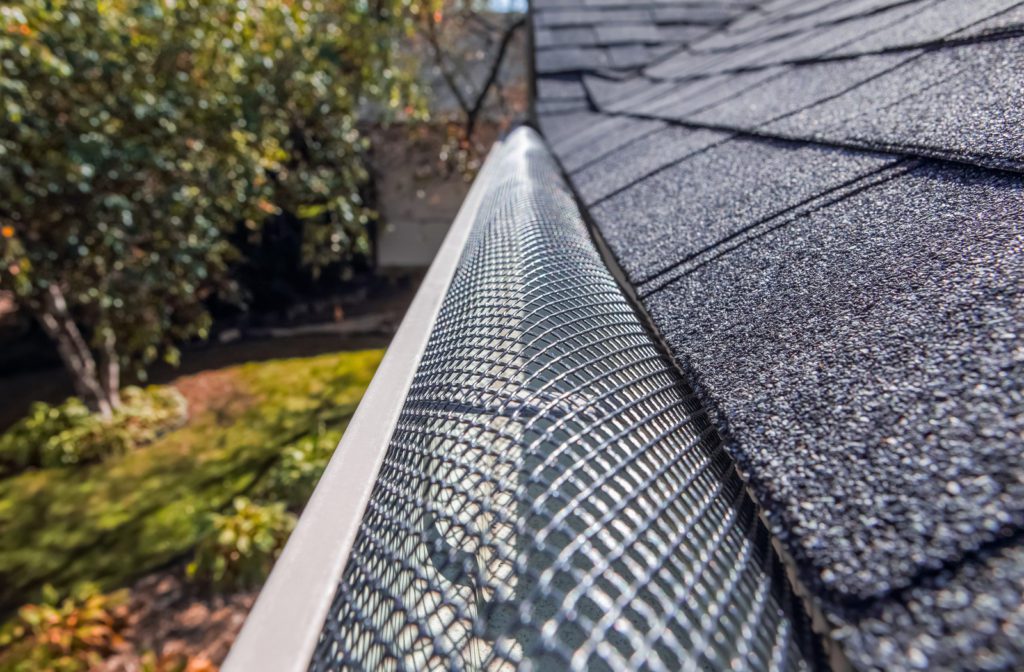
Different Types of Leaf Guards
Not all leaf guards are the same. There are 5 main types of leaf guards, each with their own pros and cons.
Screen Guards
Screen guards represent an inexpensive and easy-to-install option for homeowners who want basic protection for their gutters. These thin sheets of wire mesh or plastic can simply be slid underneath the shingles on the edge of the roof, which weigh them down and keep them positioned over the tops of your gutters.
However, be advised that screen guards can sometimes come loose during inclement weather. Tampering with your shingles may also void the warranty on your roof, so always ask a licensed roofing contractor about screen guards before attempting to install them yourself.
Micro Mesh Guards
These leaf guards follow the same basic principle as screen guards, in that they involve covering the openings of your gutters with mesh that lets water run through while stopping solid debris. However, micro mesh guards have smaller openings and can often be installed by snapping the guard to the top of the gutter directly.
Other micro mesh guards can be installed by connecting a flange to the fascia of your roof. If you invest in micro mesh guards, make sure to clean them occasionally by using a garden sprayer and a brush to remove material that may become trapped in the ultra-small holes (such as dirt and dust).
Reverse Curve Guards
Reverse curve guards are designed with a bend that allows water to flow around the guard and into the gutter while guiding larger debris to the edge of the roof, where it can safely slide off. These gutters are generally well-engineered, high-quality roofing accessories that are effective at keeping gutters clear even in yards with plenty of trees.
Reverse curve gutters can also be more expensive than other kinds, and they’re generally more complicated to install. Investing in this type of leaf guard for your home is an excellent way to keep your gutters free from clogs and enjoy the peace of mind that comes with knowing an overflowing gutter won’t cause water damage to your home.
Brush Guards
Brush guards are about as low-tech as leaf guards get, but they can still be pretty effective. These budget-friendly guards resemble large pipe-cleaners that you can easily insert lengthwise into your gutters to block large debris from settling in them.
Brush guards won’t protect your gutters from small particles that accumulate in your gutters over time, though. These guards are far better than nothing, but for total protection, you’ll want to opt for something more precise.
Foam Guards
These guards are essentially big, long, toblerone-shaped blocks of foam that sit point-down inside your gutters with the flat side leaning out towards the roof to block debris. Water can still trickle through the foam into the gutters, making these effective and cheap gutter guards.
Why Leaf Guards Matter
Purchasing gutter guards might seem unnecessary, but the costs associated with water damage are much higher—often totalling thousands of dollars. Instead of risking that kind of expense, it’s much better to buy effective gutter guards and have them professionally installed to ensure they will function properly.
Have more questions about gutter guards and what kind to buy for your home? Contact your local roofing contractors today and let a professional answer your questions.
Glorious Summer Sun & Hail?
One day, you’re outside lounging by the poolside, and the next, you’re picking up pieces of your roof and siding from your yard.
If this sounds familiar, we get it. Life in Calgary is bittersweet. We get to enjoy the most sun in the whole country, but it comes with a price.
So, what can you do to protect your home from inclement weather like hail?
If you’re installing new roofing or siding after a storm, or it’s time for an upgrade, you can consider using higher-grade material that is made to withstand the damaging effects of rogue hail and extreme winter conditions—even in the middle of summer.
Choosing the Right Shingles
If your roof or shingles need replacing, you shouldn’t hesitate to get the job done. If you wait too long, leaks can develop without your knowledge. Water and moisture can seep into your roof, attic, and eventually into your home, causing organic growth and other damage along the way.
When it comes to choosing the shingles to use on your home, there are a few weather-resistant options you can decide on.
Calgary offers a $3,000 roof rebate for homeowners whose roof was damaged by hail, and insurance will cover some, if not all, of the damage as well, so there’s really no reason to not fix your roof before it becomes a problem.
Shingles Come in 4 Varieties
- Asphalt
- Slate
- Metal
- Rubber
The type you choose should be resistant to the weather in your area. In Calgary, asphalt shingles are common because they come with a Class 4 rating, meaning they can withstand the elements a little better than lower ratings.
Rubber shingles are made from 70% recycled tire rubber and may cost more than asphalt. However a locally-manufactured product, like Euroshield rubber roofing, is able to withstand the impact from a steel ball being dropped from 20 feet, so you know hail won’t stand a chance against your roof.
The best way to ensure you are getting a hail-resistant roof is to talk to your roofing contractor. They will be able to go over the ins and outs of what type of shingles is suitable for your home.
Have a look around your neighbourhood if you aren’t sure what types of shingles to get. Do your neighbours have asphalt shingles, slate, rubber or metal? Contractors who are familiar with your weather will likely make similar recommendations for your neighbours as well.
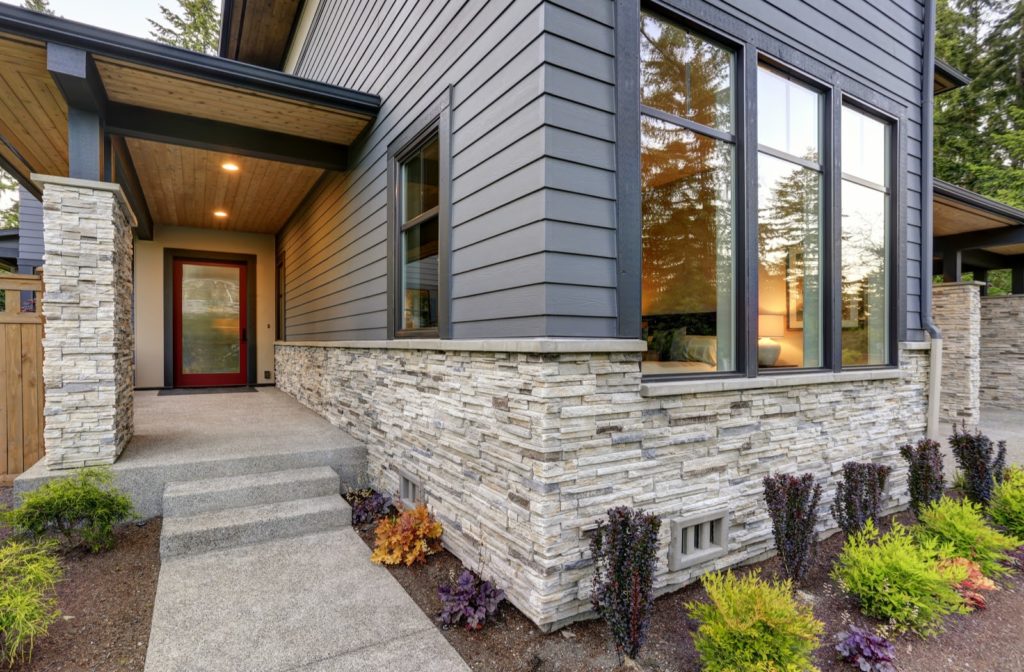
Choosing the Right Siding
Finding the right siding for your house can be tricky. We know that looks matter, so when you’re deciding, you will likely weigh aesthetic and practical considerations.
The 4 most popular choices are:
- Vinyl
- Hardie Board
- Composite
- Stone veneer
Vinyl
Vinyl siding is a very common choice of material in Calgary. It is easy to work with, comes in a multitude of colours, is durable, and doesn’t cost a lot to install. You can wash away dirt, and you won’t have to worry about repainting.
Vinyl siding can be punctured by hail, but it is also versatile and easy to replace. If you choose a generic colour, you can typically purchase new pieces to match.
Hardie Board
Siding from JamesHardie comes in a few varieties, but one thing stays the same: this product withstands the inclement Calgary weather we all know.
Available in:
- HardiePlank lap siding
- HardieShingle siding
- HardiePanel vertical siding
Made from fiber-cement material, this siding protects your home without sacrificing character and style.
Composite
Composite is made of wood and has that natural look to it. Although it is nice to look at, it does break down and rot and can attract insects and trap moisture. Composite wood can last for a long time if it is properly taken care of.
Composite wood is relatively strong, but hail can leave dents and divots in the wood. If hail cracks or penetrates the wood, it can lead to moisture entering the space between your siding and the barrier of your home. Wooden pieces should be replaced as quickly as possible to avoid further damage. Oftentimes, a new piece of wood will not match an existing piece.
Stone Veneer
Stone veneer is made of lightweight concrete and can be a very cost-effective option.
Stone veneer is very strong and can deflect hail from damaging your home. However, cracks and damage can lead to moisture entering in between the siding and the barrier of your home. Cracks should be mended right away with putty, and it doesn’t always look exactly as it used to.
Making Your Choice
When it hails, all 4 types of siding can be punctured with holes or damaged in other ways. How you choose will depend on how much maintenance you are willing to put in.
Hiring a Professional
A licensed contractor will be able to help you decide which shingles and siding you should use. If you live in an area like Calgary, a local contractor will be able to provide you with the best recommendations that will help protect your home as best as possible from hail, wind, rain, snow, and sun—yes, even UV rays can damage your home!
If your home has been damaged by hail—or if your materials are aging—it may be time for an upgrade. Contact your local professional contractors to discuss your options and receive a quote.
